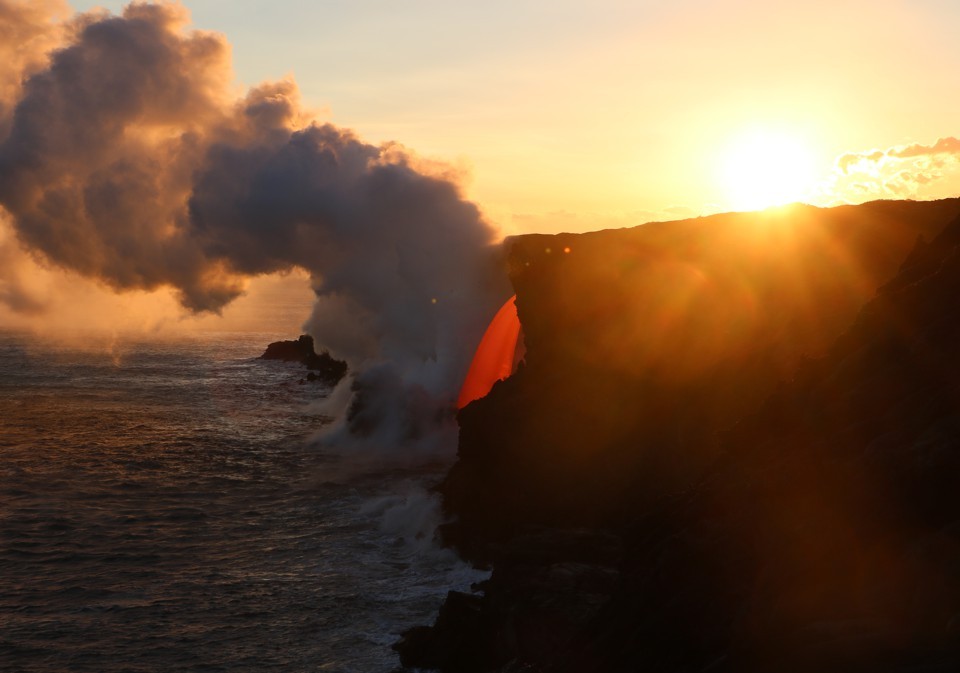Hawai‘i’s lava flow could bring new life to Big Island’s waters
 Lava from Kīlauea volcano, on the island of Hawai‘i, flows into the ocean. Image courtesy of the United States Geological Survey (USGS).
Lava from Kīlauea volcano, on the island of Hawai‘i, flows into the ocean. Image courtesy of the United States Geological Survey (USGS).The waters of Hawai‘i are no stranger to volcanic eruptions; they are, after all, how the islands were formed and continue to be reshaped. But the lava flowing into the ocean at the southern end of Hawai‘i Island is unique. At the end of December 2016, 22 acres of the island dropped into the sea as lava from Kīlauea, one of the most active volcanoes in the world, surged through the brittle cliffs. The lava flow shifted from dozens of small leaks to one huge lava “fire hose.” Now thousands of gallons flow into one specific part of the ocean every day.
The answer, for the most part, is nothing can survive the onslaught of 2000°F molten rock. “In the areas where lava is entering the sea, there is essentially no marine life, as the bottom is being constantly recreated by the new lava rock,” says Steven Dollar, a marine researcher in the department of Oceanography. The waters around the flow are so blistering that not even microscopic plankton could survive in them. Furthermore, waters around an eruption can become so choked with pumice and ash that local fish, birds, marine mammals, and plants die.
But in this case, destruction isn’t as disastrous as it seems. In fact, in the right circumstances a massive eruption like this can give ecosystems a big boost. The changing conditions don’t just wreak havoc; they spur new life.
The International Pacific Research Centers (IPRC)’s Megumi Chikamoto and Axel Timmermann published a report in 2016 in Geophysical Research Letters (abstract) that focused on the effects of volcanic activity on the biological productivity of the upper layers of the ocean. They discovered using three separate models that large volcanic ash plumes introduced into the atmosphere may induce widespread cooling across the nearby ocean, which enhances mixing in the upper ocean. In turn, this would increase nutrient delivery to this biologically active zone, thereby enhancing biological productivity.
Read more about it in The Atlantic, and watch a short video of the flow.




